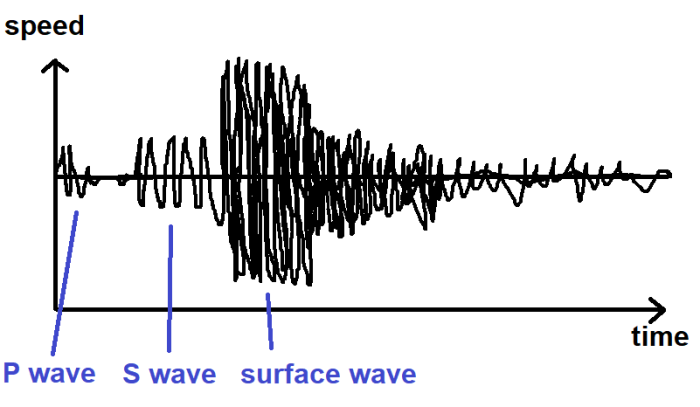What is an earthquake?
If you could see inside planet Earth, you would see that it is not made of solid rock. The top layer of Earth, containing all the continents, and holding the floor of all the oceans, is called the crust. This layer is made of rock and metal, and is almost 70 km thick!
This sounds enormous, but the layers underneath are even larger. Immediately underneath the crust is a semi-solid mantle, followed by a liquid outer core, and a solid inner core at the centre. The mantle and the cores are thousands of kilometres thick. It is strange to think that there are all these layers underneath us!

Now, earthquakes occur in the crust of the Earth. The crust itself is split into chunks called tectonic plates that float around on top of the mantle.

The diagram above shows what the world would look like if we could lift the plates of the crust above the mantle.
An earthquake occurs when two different tectonic plates grind into each other or slip underneath each other. The point directly underneath the surface of the Earth where the earthquake begins is called the epicentre, and it releases an enormous amount of energy which is transferred to the surface of the Earth by seismic waves.
What are seismic waves?
Seismic waves are 'earthquake waves', and there are two types of wave. P waves are fast-moving, longitudinal waves, that vibrate up and down as the wave moves upwards from the epicentre. S waves are slower, transverse waves. This means that S waves cause side-to-side motion as the wave travels upwards.
A seismograph is the trace that an earthquake makes. Scientists use machinery to measure the vibrations on the surface of the Earth when an earthquake is occurring, by recording the speed of the waves at each point in time. It allows them to predict when an earthquake will reach the Earth's surface, and how powerful it will be.

The wave shown above is an example of a seismograph trace. The P wave, being faster than the S wave, will be detected first. The S wave will then be detected, and then finally, the surface waves will begin. As you can see, the surface waves have the largest amplitudes, as they shake the ground much harder.
P waves and S waves are examples of pressure waves, as they need particles to transfer energy. In this case, the particles consist of all the matter in the Earth's crust.
Let's have a go at some questions on this now.







